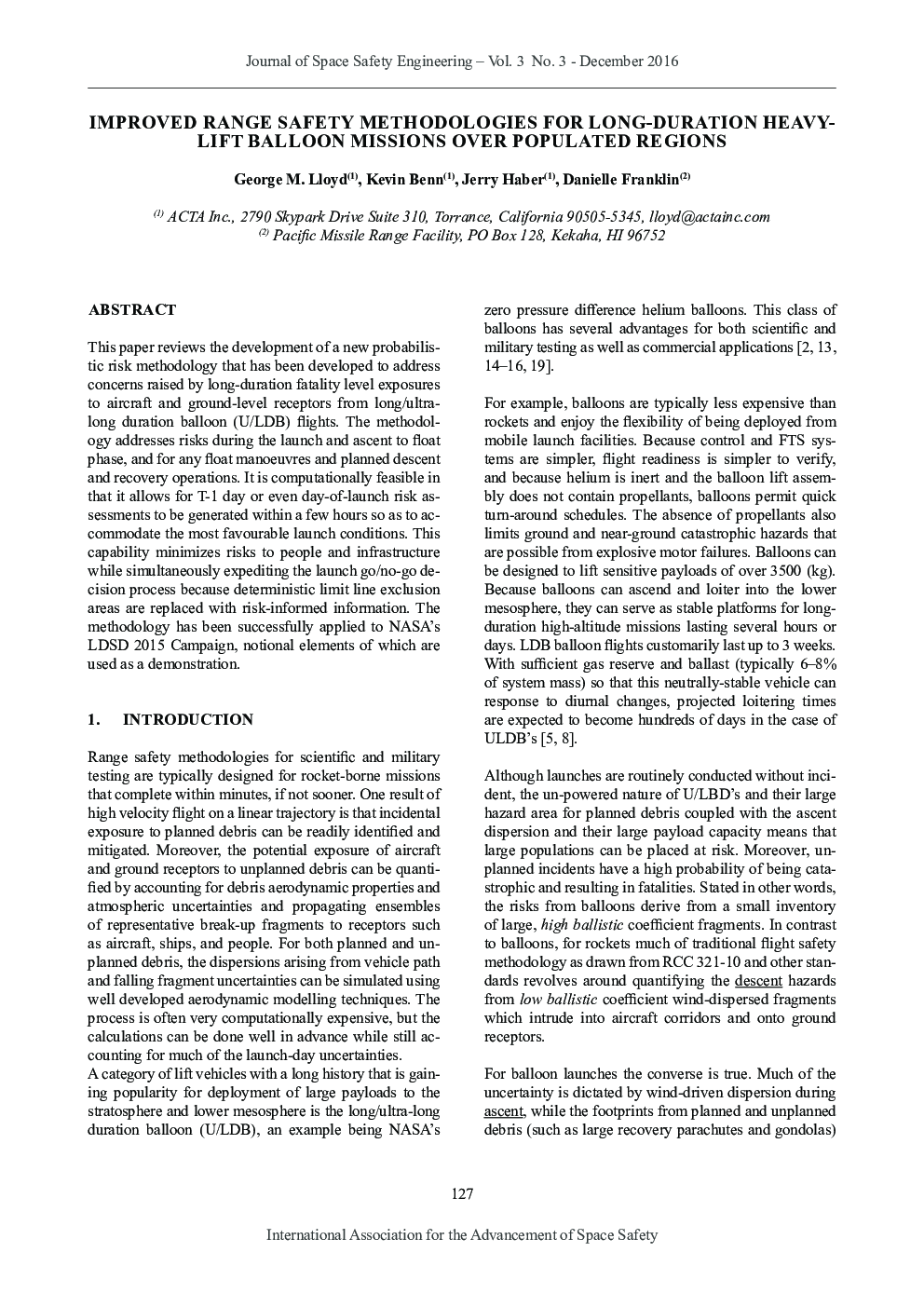| Article ID | Journal | Published Year | Pages | File Type |
|---|---|---|---|---|
| 10998287 | Journal of Space Safety Engineering | 2016 | 9 Pages |
Abstract
This paper reviews the development of a new probabilistic risk methodology that has been developed to address concerns raised by long-duration fatality level exposures to aircraft and ground-level receptors from long/ultra-long duration balloon (U/LDB) flights. The methodology addresses risks during the launch and ascent to float phase, and for any float manoeuvres and planned descent and recovery operations. It is computationally feasible in that it allows for T-1 day or even day-of-launch risk assessments to be generated within a few hours so as to accommodate the most favourable launch conditions. This capability minimizes risks to people and infrastructure while simultaneously expediting the launch go/no-go decision process because deterministic limit line exclusion areas are replaced with risk-informed information. The methodology has been successfully applied to NASA's LDSD 2015 Campaign, notional elements of which are used as a demonstration.
Related Topics
Physical Sciences and Engineering
Earth and Planetary Sciences
Space and Planetary Science
Authors
George M. Lloyd, Kevin Benn, Jerry Haber, Danielle Franklin,
